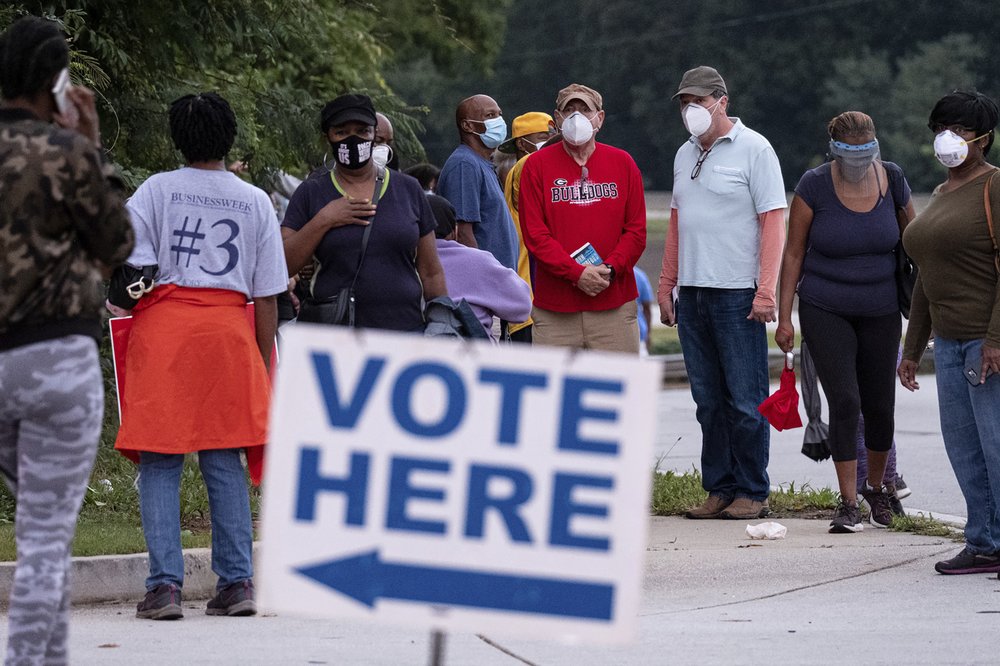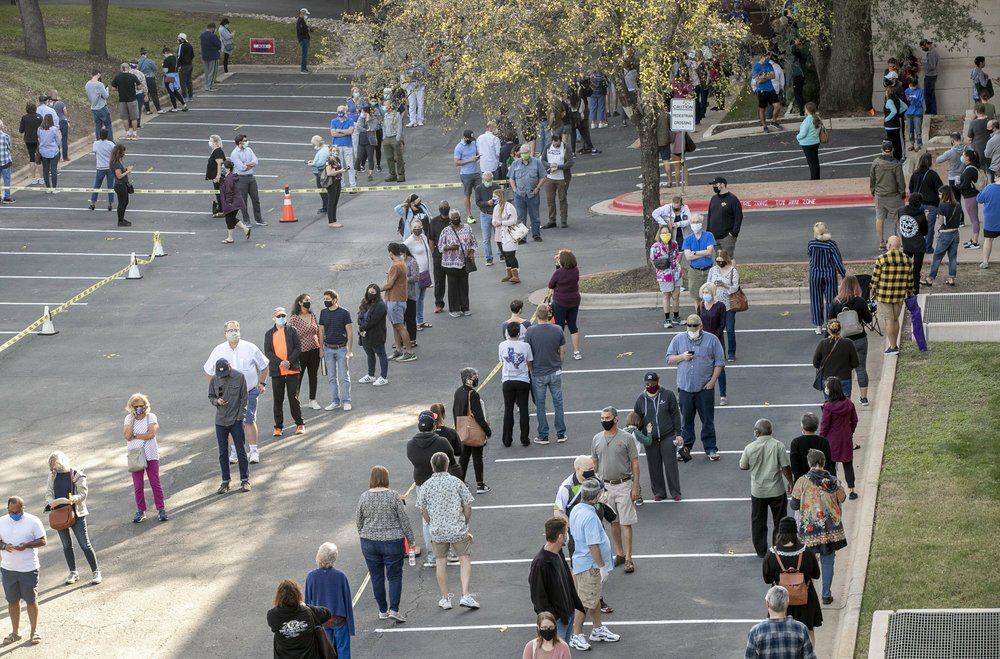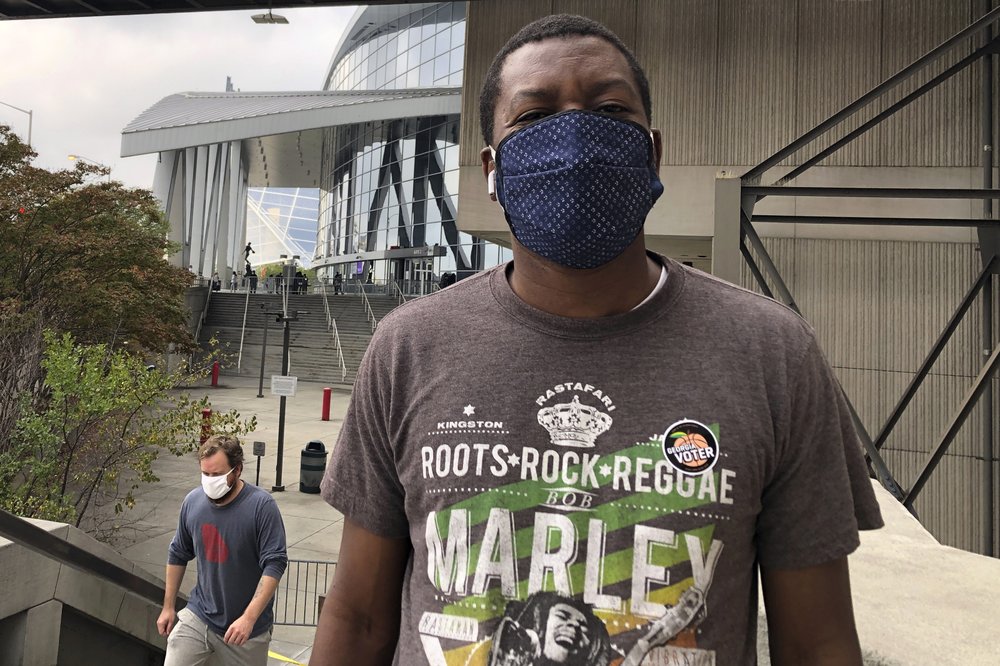Avalanche of early votes is transforming the 2020 election
Election experts predict that a record 150 million votes may be cast and turnout rates could be higher than in any presidential election since 1908
More than 17 million Americans have already cast ballots in the 2020 election, a record-shattering avalanche of early votes driven both by Democratic enthusiasm and a pandemic that has transformed the way the nation votes.
The total represents 12% of all the votes cast in the 2016 presidential election, even as eight states are not yet reporting their totals and voters still have more than two weeks to cast ballots. Americans’ rush to vote is leading election experts to predict that a record 150 million votes may be cast and turnout rates could be higher than in any presidential election since 1908.
Read More: George Floyd’s sister makes impassioned plea to vote for Biden in campaign ad
“It’s crazy,” said Michael McDonald, a University of Florida political scientist who has long tracked voting for his site ElectProject.org. McDonald’s analysis shows roughly 10 times as many people have voted compared with this point in 2016.
“We can be certain this will be a high-turnout election,” McDonald said.
So far the turnout has been lopsided, with Democrats outvoting Republicans by a 2-1 ratio in the 42 states included in The Associated Press count. Republicans have been bracing themselves for this early Democratic advantage for months, as they’ve watched President Donald Trump rail against mail-in ballots and raise unfounded worries about fraud. Polling, and now early voting, suggest the rhetoric has turned his party’s rank and file away from a method of voting that, traditionally, they dominated in the weeks before Election Day.

That gives Democrats a tactical advantage in the final stretch of the campaign. In many critical battleground states, Democrats have “banked” a chunk of their voters and can turn their time and money toward harder-to-find infrequent voters.
But it does not necessarily mean Democrats will lead in votes by the time ballots are counted. Both parties anticipate a swell of Republican votes on Election Day that could, in a matter of hours, dramatically shift the dynamic.
“The Republican numbers are going to pick up,” said John Couvillon, a GOP pollster who is tracking early voting. “The question is at what velocity, and when?”
Couvillon said Democrats can’t rest on their voting lead, but Republicans are themselves making a big gamble. A number of factors, from rising virus infections to the weather, can impact in-person turnout on Election Day. “If you’re putting all your faith into one day of voting, that’s really high risk,” Couvillon said.
That’s why, despite Trump’s rhetoric, his campaign and party are encouraging their own voters to cast ballots by mail or early and in-person. The campaign, which has been sending volunteers and staffers into the field for months despite the pandemic, touts a swell in voter registration in key swing states like Florida and Pennsylvania — a sharp reversal from the usual pattern as a presidential election looms.
But it’s had limited success in selling absentee voting. In key swing states, Republicans remain far less interested in voting by mail.
In Pennsylvania, more than three-quarters of the more than 437,000 ballots sent through the mail so far have been from Democrats. In Florida, half of all ballots sent through the mail so far have been from Democrats and less than a third of them from Republicans. Even in Colorado, a state where every voter is mailed a ballot and Republicans usually dominate the first week of voting, only 19% of ballots returned have been from Republicans.

“This is all encouraging, but three weeks is a lifetime,” Democratic data strategist Tom Bonier said of the early vote numbers. “We may be midway through the first quarter and Democrats have put a couple of points on the board.”
The massive amount of voting has occurred without any of the violent skirmishes at polling places that some activists and law enforcement officials feared. It has featured high-profile errors — 100,000 faulty mail ballots sent out in New York, 50,000 in Columbus, Ohio, and a vendor supplying that state and Pennsylvania blaming delays on sending ballots on overwhelming demand. But there’s little evidence of the mass disruption that some feared as election offices had to abruptly shift to deal with the influx of early voting.
But there have been extraordinary lines and hours-long wait times in Georgia, Texas and North Carolina as they’ve opened in-person early voting. The delays were largely a result of insufficient resources to handle the surge, something advocates contend is a form of voter suppression.
Republicans argue that these signs of enthusiasm are meaningless — Democratic early voters are people who would have voted anyway, they say. But an AP analysis of the early vote shows 8% of early voters had never cast a ballot before, and 13.8% had voted in half or fewer of previous elections for which they were eligible.
The data also show voters embracing mail voting, which health officials say is the safest way to avoid coronavirus infection while voting. Of the early voters, 82% cast ballots through the mail and 18% in person. Black voters cast 10% of the ballots cast, about the same as their share of the national electorate, according to the AP analysis of data from L2, a political data firm. That’s a sign that those voters, who have been less likely to vote by mail than white people and Latinos, have warmed to the method.

Mail ballots so far have skewed toward older voters, with half coming from voters over age 64. Traditionally, younger and minority voters send their mail ballots in closer to Election Day or vote in person.
The mail ballots already returned in several states dwarf the entire total in prior elections. In Wisconsin, more than five times as many mail ballots have been cast compared with the entire number in 2016. North Carolina has seen nearly triple the number so far.
In-person early voting began this week in several major states and also broke records, particularly in crowded, Democratic-leaning metropolitan areas. In Texas, Houston’s Harris County saw a record 125,000 ballots cast. In Georgia, hours-long lines threaded from election offices through much of the state’s urban areas.
Read More: Kerry Washington says Black people are ‘seduced into voting conservative’
Tunde Ezekiel, a 39-year-old lawyer and Democrat who voted early in Atlanta on Thursday, said he wanted to be certain he had a chance to oust Trump from office: “I don’t know what things are going to look like on Election Day. … And I didn’t want to take any chances.”
The obvious enthusiasm among Democrats has cheered party operatives, but they note that it’s hard to tell which way turnout will eventually fall. Republicans may be just as motivated, but saving themselves for Election Day.
“High turnout can benefit either side,” Bonier said. “It just depends.”
__
Associated Press writers Kate Brumback in Atlanta and Pia Deshpande in Chicago contributed to this report.
Have you subscribed to theGrio’s new podcast “Dear Culture”? Download our newest episodes now!
TheGrio is now on Apple TV, Amazon Fire, and Roku. Download theGrio today!
